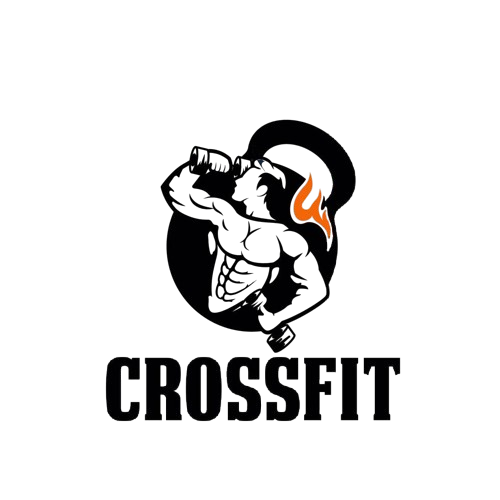In the world of fitness, few names are as synonymous with high-intensity, community-driven workouts as CrossFit. But beyond the grueling WODs and the camaraderie lies a question of ownership that intrigues many. Who exactly owns this powerhouse brand that has revolutionized the way we think about fitness? This article peels back the layers of the corporate structure to reveal the individuals and entities behind CrossFit, offering insights into the business dynamics powering this global phenomenon.
The Genesis of CrossFit Ownership
The story of CrossFit’s ownership is a tale of passion, vision, and evolution. Initially conceived by Greg Glassman, a former gymnast, CrossFit was born out of a desire to defy the conventional gym regimen, focusing instead on varied, high-intensity, functional movements. Glassman, alongside Lauren Jenai, co-founded CrossFit Inc. in 2000, laying the groundwork for what would become a global fitness phenomenon. The early days were marked by a grassroots approach, with workouts shared freely online, fostering a community-driven expansion.
However, the path of CrossFit’s ownership took a dramatic turn in recent years. By 2020, amidst growing controversy and calls for leadership change, Greg Glassman sold CrossFit Inc. to Eric Roza, a seasoned entrepreneur and dedicated CrossFitter. Roza stepped in with a vision to not only continue the legacy of CrossFit but also to address the challenges and criticisms it faced. Under his guidance, CrossFit has embarked on a new chapter, focusing on inclusivity, health, and global community engagement.
Understanding the evolution of CrossFit’s ownership offers insights into how businesses can adapt and thrive amid challenges. It showcases the importance of leadership that is responsive to both community needs and broader societal issues. The transfer of ownership from Glassman to Roza symbolizes a pivotal moment in CrossFit’s history, reflecting a broader trend of businesses evolving to meet the changing demands of their consumers and communities.
- Founding of CrossFit, Inc. by Greg Glassman and Lauren Jenai in 2000.
- Early growth through online workout postings and word-of-mouth.
- Expansion into a global fitness movement with affiliated gyms worldwide.
- Controversies leading to leadership changes and calls for a new direction.
- Acquisition by Eric Roza in 2020, signaling a new era for CrossFit.
Greg Glassman’s Tenure and Influence
Greg Glassman, the co-founder of CrossFit, Inc., has been a pivotal figure in the fitness industry, shaping the landscape of high-intensity functional training. His tenure at CrossFit saw the brand grow from a single gym in Santa Cruz, California, to a global fitness phenomenon. Under Glassman’s leadership, CrossFit not only popularized a new approach to fitness but also fostered a community that spans across more than 13,000 affiliated gyms in over 120 countries. This expansion was not merely a result of effective marketing; it was the manifestation of Glassman’s vision of fitness as a broad, inclusive concept that can be adapted to suit individuals at any level of ability.
Greg Glassman’s influence on the fitness world extends beyond the creation and dissemination of workout routines. He was instrumental in promoting the idea of fitness as a measurable, observable, and repeatable phenomenon. This approach led to the development of the CrossFit Games, an annual fitness competition that seeks to identify the “Fittest on Earth.” The Games have played a crucial role in not only testing fitness standards but also in popularizing CrossFit methodologies. The competitive aspect introduced by Glassman has inspired countless individuals to engage in regular physical activity, pushing the boundaries of their personal fitness.
Despite his significant contributions, Glassman’s tenure was not without controversy. His management style and some of his public statements sparked debates within the fitness community. However, his impact on the industry is undeniable. Glassman’s vision brought forth a paradigm shift in how people perceive and engage in fitness. By promoting functional movements and high-intensity workouts, he challenged the conventional gym culture and introduced a regime that emphasizes overall health and well-being.
- Establishment of CrossFit’s first affiliate program, enabling the brand’s global expansion.
- Introduction of the CrossFit Games, elevating the community aspect of fitness through competition.
- Development of a certification and education system for trainers, ensuring the quality and consistency of CrossFit training worldwide.
- Promotion of health and fitness as accessible and essential for people of all ages and abilities.
- Advocacy for nutritional standards that complement physical training, emphasizing the importance of a holistic approach to health.
Greg Glassman’s tenure as the head of CrossFit, Inc. will be remembered as a period of revolutionary change in the fitness industry. His innovative approach to exercise, emphasis on community building, and contributions to fitness education have left an indelible mark on how fitness is understood and practiced around the world. Regardless of the controversies, Glassman’s legacy is a testament to the power of a visionary leader to inspire change and challenge the status quo.
The Acquisition by Eric Roza
In a significant turn of events that reshaped the landscape of the fitness world, CrossFit Inc. was acquired by Eric Roza, a seasoned entrepreneur and a passionate CrossFit enthusiast. This acquisition marked a new chapter for the company, which had been seeking a fresh direction following a series of controversies. Roza, previously known for his success with Datalogix before its acquisition by Oracle, brought not only a business-savvy approach to CrossFit but also a deep personal commitment to its community and ethos.
Under the stewardship of Roza, who took over as CEO in July 2020, CrossFit has embarked on a mission to reaffirm its position as a leading fitness movement. His primary goals include emphasizing inclusivity within the CrossFit community, enhancing health and fitness standards, and expanding the brand’s global reach. Roza’s approach has been holistic, focusing on nurturing the grassroots elements of CrossFit while also seeking to innovate and expand its appeal to a broader audience. The impact of his leadership is evident in the revitalized energy and optimism within the CrossFit community, signaling a promising future for the brand.
Furthermore, Eric Roza’s acquisition is not merely a business transaction; it represents a commitment to the core values of CrossFit. By prioritizing the health and well-being of its members, Roza aims to steer CrossFit towards becoming the world’s leading platform for health, happiness, and performance. His vision extends beyond the gym, aspiring to foster a global community that supports each other in achieving personal fitness goals and overall well-being.
| Year | Event | Impact |
|---|---|---|
| 2020 | Eric Roza acquires CrossFit | Marked a new era for CrossFit with a focus on inclusivity and global expansion |
| 2021 | Introduction of new initiatives | Enhanced community engagement and fitness standards |
| 2022 | Expansion of global CrossFit Games | Broadened the brand’s appeal and visibility worldwide |
| 2023 | Launch of health and wellness programs | Emphasized on holistic health, reaching beyond the traditional CrossFit audience |
Financial Stakeholders in CrossFit Today
The landscape of CrossFit’s ownership and financial backing has evolved significantly over the years, reflecting the brand’s journey from a niche fitness trend to a global phenomenon. Today, the financial stakeholders in CrossFit range from private equity firms to individual investors who see value in the brand’s community-driven approach and robust affiliate model. Among these, a few key players stand out, shaping the direction and expansion of CrossFit on a global scale.
In recent years, Eric Roza, a seasoned entrepreneur and passionate CrossFitter, acquired a majority stake in CrossFit Inc., stepping in as CEO to steer the company towards a more inclusive and growth-oriented future. His investment signaled a new era for CrossFit, focusing on enhancing user experience, expanding digital offerings, and reinforcing the brand’s commitment to health and fitness. Alongside Roza, Berkshire Partners, a Boston-based investment firm, emerged as a significant financial backer. Their involvement has provided CrossFit with the strategic resources needed to navigate the complexities of the fitness industry while pursuing ambitious expansion plans. Additionally, the CrossFit community, comprising thousands of affiliate gyms worldwide, remains a crucial stakeholder, contributing not just financially through affiliation fees, but also by fostering a loyal and engaged user base.
Understanding the dynamics and interests of CrossFit’s financial stakeholders is essential for grasping the brand’s strategic direction. Investments from figures like Eric Roza and firms like Berkshire Partners underscore a commitment to innovation and community that is likely to influence CrossFit’s operations and offerings for years to come. As CrossFit continues to evolve, monitoring these stakeholders will provide valuable insights into the future of fitness and wellness.
- Eric Roza – Majority Stakeholder & CEO
- Berkshire Partners – Significant Investment Firm
- Affiliate Gyms – Global Network of CrossFit Gyms
- Individual Investors – Contributing to Funding Rounds
- Community Members – Core of CrossFit’s User Base
CrossFit’s Governance and Leadership Structure
The governance and leadership structure of CrossFit, Inc., a key player in the global fitness industry, exhibits a fascinating mix of traditional corporate hierarchy and the agile, adaptive approach that is characteristic of the brand’s ethos. At the helm of its governance structure is the CEO, who plays a crucial role in setting strategic direction, overseeing global operations, and ensuring that the brand’s core values are upheld across all facets of the business. The leadership team beneath the CEO is composed of senior executives who manage specific domains such as marketing, finance, operations, and program development. This tiered structure enables CrossFit to maintain a clear vision and direction while also allowing for specialization and expertise in key areas of the business.
However, CrossFit’s leadership extends beyond its corporate office. The company places a strong emphasis on community and decentralization, empowering affiliate gym owners and coaches to make decisions that best serve their local members. This blend of central governance and local autonomy ensures that while the brand maintains consistency and quality across its global network, it also fosters innovation and responsiveness to local needs and preferences. Moreover, CrossFit has established various councils and committees, composed of affiliate owners, athletes, and community members, that provide input and feedback on policy and program development, further democratizing its governance structure.
The agility of CrossFit’s leadership is also evident in its adaptability to challenges and opportunities. Whether navigating global health crises, evolving its competitive events, or expanding its health and wellness initiatives, the leadership team’s ability to pivot and innovate has been pivotal in maintaining the brand’s relevance and growth. Through a combination of visionary leadership at the corporate level and empowered decision-making at the local level, CrossFit continues to thrive as a leading force in the fitness industry.
- CEO and Senior Executives: Responsible for setting strategic direction and overseeing global operations.
- Affiliate Owners and Coaches: Empowered to make localized decisions, fostering community and innovation.
- Councils and Committees: Comprise various stakeholders providing feedback on policy and program development.
- Global Network: Ensures consistency and quality across the brand while allowing for local adaptation.
- Adaptability: Key to navigating challenges and seizing opportunities, ensuring the brand’s continued growth and relevance.
Impact of Ownership Changes on Community
The global CrossFit community has witnessed substantial shifts due to changes in its ownership structure. These alterations have not only influenced the brand’s strategic direction but have also deeply affected its widespread community. The transfer of ownership from Greg Glassman to Eric Roza in 2020 marked a pivotal moment for CrossFit, Inc., promising a new era focused on inclusivity and growth. This transition was met with a blend of anticipation and skepticism among the dedicated CrossFit followers.
One significant impact of this change has been the renewed focus on health and wellness, extending beyond the competitive nature CrossFit was initially known for. Under new leadership, there’s been a concerted effort to make CrossFit more accessible to people of all fitness levels, aiming to dismantle the perception of it being solely for elite athletes. Moreover, the emphasis on community support and the introduction of initiatives aimed at mental health and diversity have fostered a more inclusive atmosphere. These efforts have helped in rebuilding trust and loyalty amongst the existing members, while also attracting new participants to the CrossFit methodology.
However, the transition has not been without its challenges. The change in ownership initially led to uncertainty within the community, with some affiliates expressing concern over the future direction of the brand. Despite this, the clear communication and transparency from the new leadership have been instrumental in reassuring the community, highlighting the importance of adaptability and resilience in the face of change.
- Renewed focus on inclusivity and accessibility.
- Introduction of mental health and diversity initiatives.
- Efforts to make CrossFit appealing to a broader audience.
- Improved communication and transparency with the community.
- Enhanced support and resources for CrossFit affiliates.
In conclusion, the ownership changes within CrossFit have undeniably left a mark on its community, steering the brand towards a more inclusive and health-focused future. While these transitions posed challenges, they have also opened doors to opportunities, reinforcing the community’s adaptability and commitment to the core values of CrossFit. As the brand continues to evolve under new leadership, it stands as a testament to the strength and unity of the CrossFit community worldwide.







